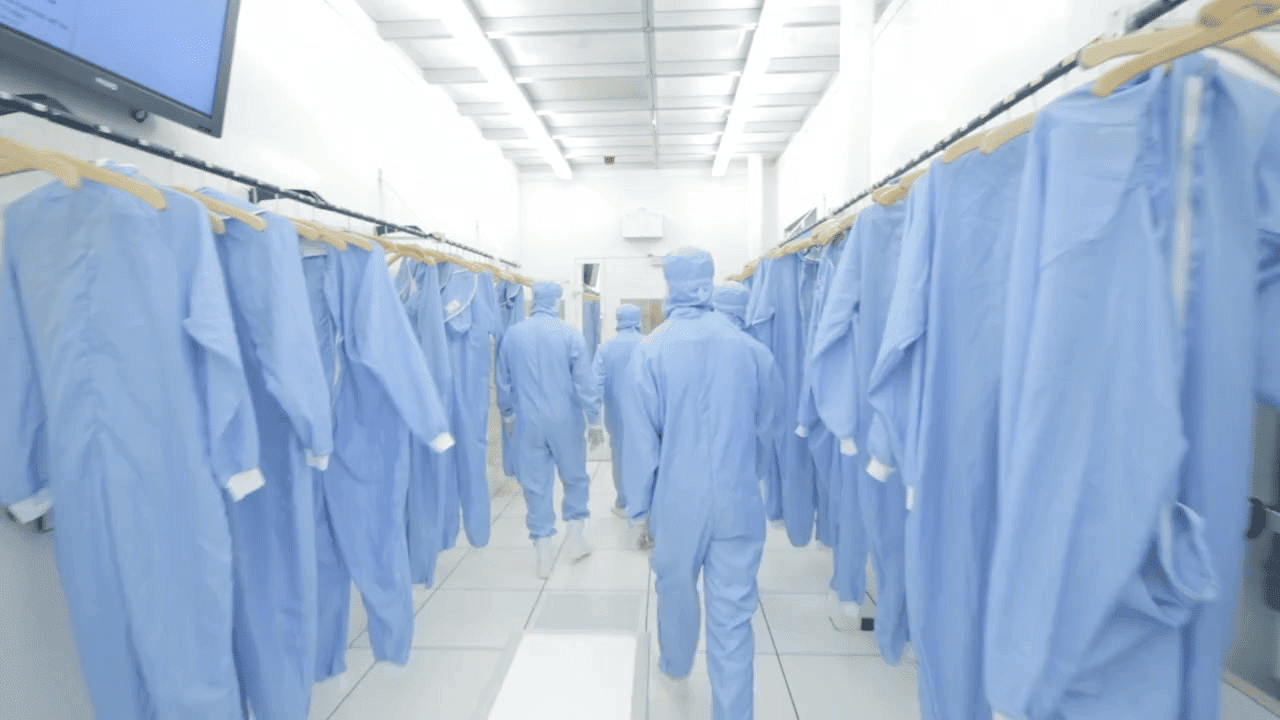Cleanrooms play a pivotal role in industries such as semiconductor manufacturing, pharmaceuticals and biotechnology, where the tiniest particle or contaminant can lead to catastrophic consequences. Maintaining a pristine cleanroom environment is not just a requirement; it’s a necessity for precision and quality. Businesses can implement rules and procedures to ensure a cleanroom provides controlled conditions.
1. Proper Attire and Personal Hygiene
The personnel working within the cleanroom environment are the first line of defense against contamination. Employees must adhere to strict dress codes, including using cleanroom garments like cleanroom gowns, gloves, and shoe covers. Proper grooming and personal hygiene are part of this, and employees should shower before entering the cleanroom and avoid using cosmetics, perfumes or lotions as they can cause contamination.
2. Entrance and Exit Procedures
Contaminants often enter cleanrooms through personnel movement. Establishing well-defined entrance and exit procedures is crucial, as 80% of contamination enters at the floor level. Air showers and gowning areas act as buffer zones, minimizing the transfer of particles from outside to inside the controlled environment. To reduce particle shedding, employees should always follow the step-by-step process when entering and exiting a cleanroom, including gowning up and passing through air showers.
3. Regular Training and Certification
Cleanroom protocols and standards evolve, and personnel must stay ahead of these changes. Regular training sessions on cleanroom practices, contamination control, and emergency procedures are essential. Certifying employees on cleanroom etiquette ensures a consistent understanding of the importance of their role in maintaining a contamination-free environment.
4. Strict Environmental Monitoring
Continuous monitoring of the cleanroom environment will increase the chances of early detection of potential issues. Use monitoring systems to measure parameters such as particle counts, temperature, humidity, and air pressure differentials. Implement a system of alarms to alert personnel promptly if any parameter deviates from the specified limits because of external factors.
5. Stringent Cleaning and Maintenance Protocols
Cleanroom surfaces, equipment, and tools must undergo regular and thorough cleaning procedures. Use cleaning agents specified for cleanroom use like Disinfectants, Sporicides and Biocides, and follow prescribed cleaning schedules. The inclusion of Dycem contamination control helps maintain a pristine cleanroom environment. Dycem mats are strategically positioned at entry points to capture and retain particles from shoes and equipment wheels. Regular cleaning ensures the effectiveness of Dycem in reducing airborne and surface contaminants. This integrated approach adds an extra layer of protection, reinforcing the commitment to upholding the highest standards of cleanliness within the cleanroom facility.
6. Controlled Materials and Supplies
Introduce a stringent process for introducing materials and supplies into the cleanroom. All items must undergo rigorous inspection and cleaning before entry. Packaging should comply with cleanroom standards, and personnel must handle materials carefully to prevent particle generation. Implementing a material transfer process ensures that only approved items enter the cleanroom.
7. Adherence to Protocols during Operations
Once inside the cleanroom, personnel should strictly adhere to protocols during operations. Minimize unnecessary movements and use approved tools and equipment. Report any spills, deviations, or malfunctions immediately. In the event of an emergency, personnel should follow predefined procedures to evacuate the cleanroom without compromising safety or contaminating the environment.
Cleanroom Management with Dycem
Maintaining a cleanroom environment is a collective responsibility that demands unwavering attention to detail. Organizations should focus on creating a culture of cleanliness, precision, and reliability within their cleanroom facilities. In doing so, they meet industry standards and contribute to producing high-quality, contamination-free products. Cleanrooms are the backbone of industries where precision is needed, and by mastering cleanroom etiquette, organizations ensure their operations remain at the forefront of technological excellence.
Contact us today to learn more about our advanced contamination control Dycem products and strategies. Enhance your cleanroom’s efficiency and quality with our solutions.

